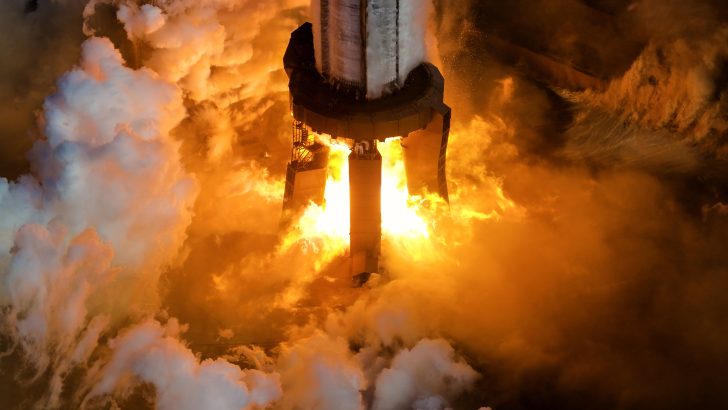This is not investment advice. The author has no position in any of the stocks mentioned. Wccftech.com has a disclosure and ethics policy.
After losing a Starship upper-stage rocket to an explosion in June, SpaceX test-fired another ship at the launch pad in Boca Chica, Texas, earlier today. The June explosion destroyed specialized ground testing facilities for the upper stage ship and led to a delay in testing as SpaceX built a custom pad to test the ship at the launch pad instead. This stand saw its second test today after SpaceX fired a single engine of the upper stage yesterday to simulate an in-space Raptor ignition.
SpaceX Picks Up Speed With Starship Flight 10 Test Campaign
Footage from local media shows that SpaceX lit up the Starship upper stage rocket in the afternoon at the launch pad. The test lasted for roughly six seconds, and it appeared to test all six of the Starship’s engines. SpaceX had tested a single Raptor engine yesterday as part of a test to simulate an in-space Raptor ignition for Starship Flight 10.
Today’s test comes a month and a half after SpaceX lost an upper-stage ship and its ground testing facilities to an explosion. This explosion occurred during propellant loading for a static fire test, which would have been similar to the one SpaceX conducted today. The rocket tested today is the penultimate second generation Starship ship, and SpaceX should push it to maximum tolerance on Starship Flight 10.
 The Starship Flight 7 booster during its static fire for Flight 9 in April. Image: SpaceX
The Starship Flight 7 booster during its static fire for Flight 9 in April. Image: SpaceX
After Flight 10, Starship Flight 11 should be the final test where the firm relies on the second-generation upper stage ship. This design iteration has proven to be more troublesome than its predecessor, with multiple failed tests and one partially successful flight under its belt so far. The rocket has flown thrice in 2025, and its last test was the first which saw it successfully enter the designated flight trajectory.
With Flight 10, SpaceX should likely test new heatshield tiles, hardware to catch the ship with the launch pad and satellite dispensing capabilities. The test’s success will be crucial to move forward with key Starship development objectives, such as catching the ship with the launch tower and in-space propellant refueling. Both are crucial for Starship’s rapid reusability, low launch costs and flights to the Moon for NASA’s Artemis program.
SpaceX will be eager to fly Flight 10 as soon as possible, given that more than two months have elapsed since Flight 9. Provided that there are no significant anomalies on the mission, the firm should rapidly test the ship and booster for Flight 11 as it cycles through its inventory of second-generation rockets and moves towards the third-generation vehicles for future Starship test flights.
